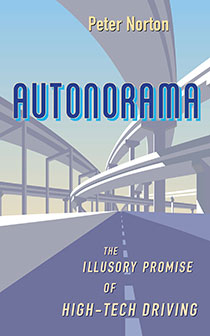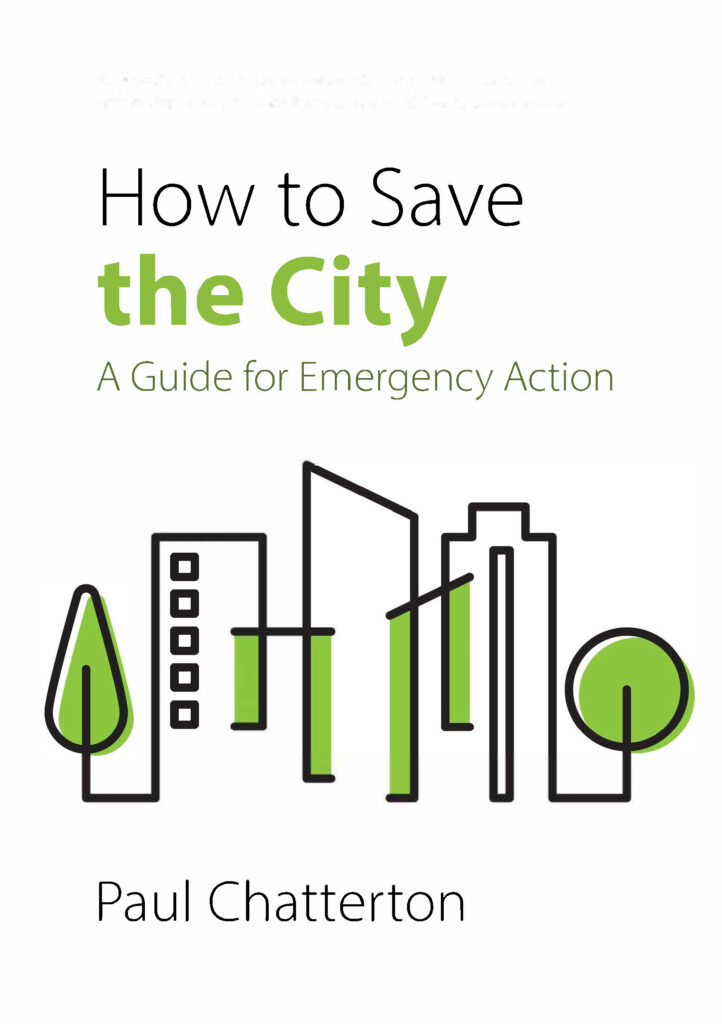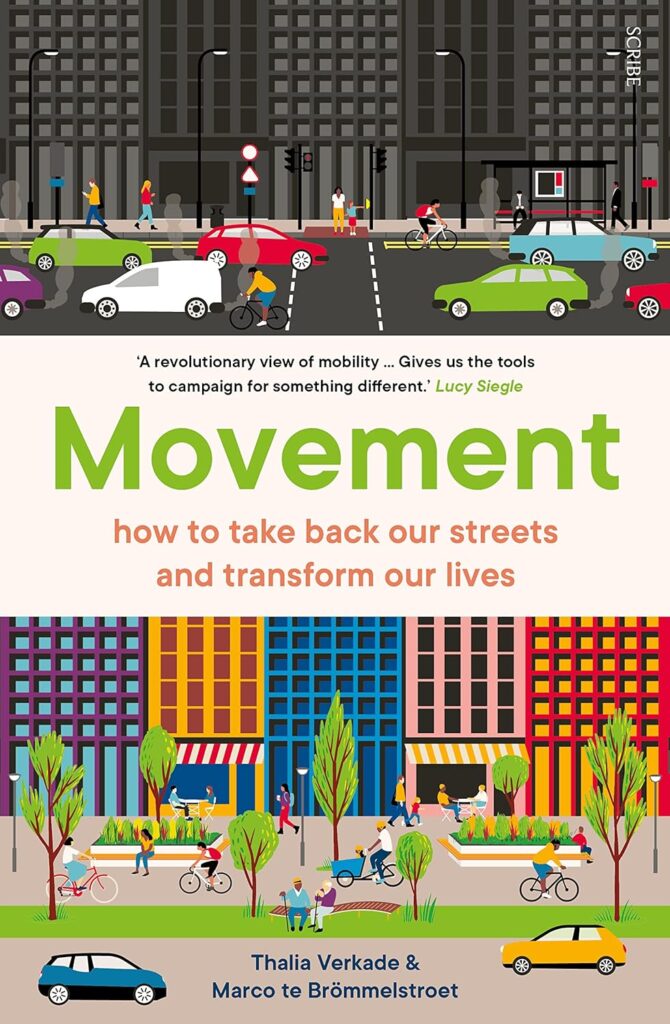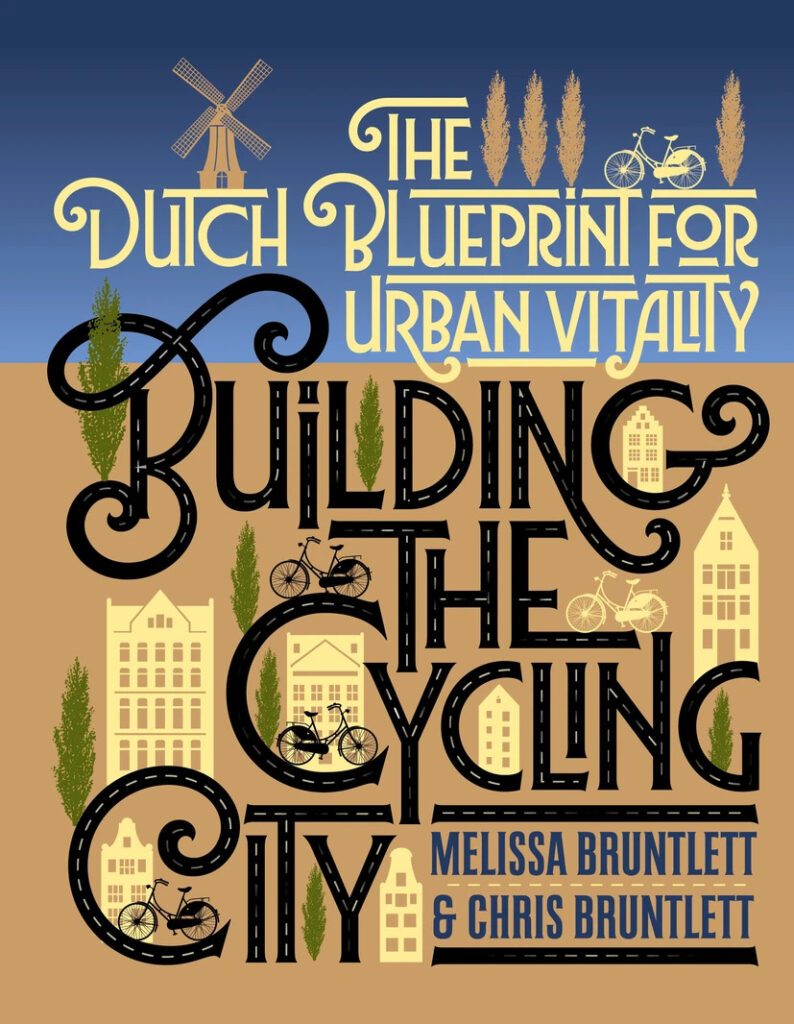
What is it about?
- The promises of Autonomous Vehicles to solve congestion, pollution and road safety are not going to materialize.
- Although the promise sounds new and exciting, it is merely a fourth round of promises by the automotive industry.
- The promises are always to solve the issues that are created by the industry itself, but the promised functioning car-dependent city will never materialize.
- This is actually the key mechanism of the capitalist model that propelled and propels the industry: always keep the consumer dissatisfied by proposing the final solution just over the foreseeable horizon.
- It is not just a political game. We live in the solidified version of this mechanism.
I started reading this book with high expectations. Having read his earlier book Fighting Traffic I admire Norton’ skills to uncover the key trends and mechanisms behind our mobility thinking and to illustrate them in a rich and very detailed way. If there was one thing that I was missing in that book, it would be the tendency to write this as an objective outsider position. Well, Autonorama builds on the same unique skills, but also compensates for that! It is a historical overview intertwined with a clear personal perspective that enriches the work and makes it much more accessible.
The overall message of the book, caught in the five statements above, is quite sobering. Even for somebody working in this field for two decades now. Yes, we know how path dependency has created systems that are hard to change. Yes, we know how the reciprocal relations with individual mobility behaviour adds to this resistance. And yes, we increasingly know the costs for society and the environment. But what Norton shows, is that there are very deliberate strategies that are underneath this. And, to a large extent, this is driven by a banal quest for money. We don’t hate cars, we hate capitalism.
To keep this machine moving forward, the industrial leaders realized that they had to keep customers –and society at large- dissatisfied, while at the same time offering solutions to the problems we were facing.
“For this supposed perfection of tomorrow, we are asked to commit vast resources in the form of money, applied research, and expert attention today. We are asked to believe, on scant evidence but plenty of fanfare, that the next generation of technology will finally deliver car dependency that works”
(p. 234)
In this line of thinking, the current focus and discussion on so-called ‘smart vehicles’ that will solve congestion, road safety issues and air quality are nothing new. They are just a fourth instalment of this dynamic of dissatisfaction and promises. The first Futurama, in response to a saturated vehicle market, promised an entire new city around the car. It set the stage for enormous government investments in a gigantic new infrastructural network completely for automobiles. Also, as covered in ‘Fighting Traffic’, richly used city streets were turned into a monoculture for car traffic.
When it became clear that the car dependent city did not, and could not materialize, a new ‘unattainable future’ was needed. In the second Futurama, GM and FORD focused on a story of how new technology would solve congestion. Electronic, or magical highways would make driving largely automated.
“By 1980s, the failed promises of the first two futuramas had mostly been forgotten, and recent technological innovations offered a basis for renewed credibility”
(p. 71)
The third round of Futurama combined technoutopist spectacle with engineering. The word ‘smart’ was introduced and advanced or high-tech technology would save the day this time. This promised again to solve the persistent problems of the car dependent city, still mostly focused on congestion and on road safety by reducing human errors. When also the military started to look for new use of their high-tech warfare instruments, the power of this combine lobby became unprecedented. Norton says, “though there was still no clear path from the military technology to better traffic conditions, there were few doubters” (p. 112, emphasis mine).
“But about a decade after Demo ’97, as memories of the extravagant promises began to fade and the latest technology validated a new generation of promises, selling high-tech car dependency returned with all the vibrancy and glamour of the previous three futuramas”
(p. 128)
The fourth and final Futurama is coined Autonorama by Norton. Now, technology and innovation are making the car itself fully Autonomous. And this time, it would take only until 2030 before the car dependent city would finally materialize and ‘bring everybody together’ with zero crashes, zero emissions and zero congestion.
“The pursuit of the utopian city where car dependency works faultlessly, including the high-tech version that forever lies twenty years hence, is not merely unrealistically ambitious. It is also destructive. Those pursuing an ever-receding horizon inevitably degrade other (less expensive and more practical) possibilities”
(p. 145)
But make no mistake, says Norton, the continued lack of achieving the promised futures should not be seen as a failure. At least, not for the industry. It is the key mechanism of the business model that guarantees continues large scale investment by the public sector and an endless spiral of consumption of their products. Cynical, but also powerful. If we want change, we need to start developing other utopian cities that make clear what other options there are and how to get there. That is where the power lies!
What approach does it take?
The book builds on historical studies into key events that shaped the car industry and society at large. Four Futurama’s (in 1940s, 1965, 1990, 2015) that shaped a techno-futuristic vision with different technologies.
Who might be interested in this book?
If you want to understand the dynamics of continuous belief that fuels rounds and rounds of mobility innovations, this book provides deep insight into the underlying mechanisms. The car industry is a clear example of a very powerful actor that perfected the model of promising the real solution in a not-too-distant future.
If you want to understand how the world in which we live, the car dependency many societies face and the lack of radical change, Autonorama also reveals how our cities and lives are solidified versions of a sophisticated sales pitch that was coherently used over time to influence policies and politics worldwide.
Further details
- Academic disciplines: Traffic engineering, History
- Geographical scope: Mostly United States of America (but also relevant for the many other contexts that take their traffic engineering guidelines, norms and inspiration from there)
- Relation to cycling: It explains the hostile context in which cyclists have to cycle, and the systemic resistance to radical change.
- Reference (APA): Marohn, C. (2021). Confessions of a Traffic Engineer: Transportation for a Strong Town, Wiley (New Jersey)



